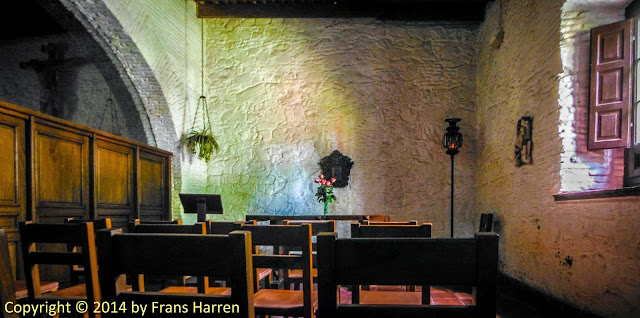
Basílica del Santísimo Sacramento
The Basilica of the Holy Sacrament is a Roman Catholic parish church in Colonia del Sacramento, Uruguay.
History
The parish was established on 2 February 1680, being one of the oldest in the country. The very first temple was a humble mud ranch. It is as old as the city itself (a former Portuguese settlement); but, together with the changing fortunes of this small city, this church suffered many bombings and destructions. The present temple dates back to 1810, when it was built according to plans by Tomás Toribio; soon afterwards a lightstorm destroyed the building, which was restored between 1836 and 1841. Finally, in 1976 a conceptual refurbishment took place, and so is the temple we see today. Important architects working in its restoration were José Terra Carve, Antonio Cravotto, and Miguel Ángel Odriozola.
In 1995, the Historic Quarter of the City of Colonia del Sacramento was declared a World Heritage Site by UNESCO - with it, the Basilica.
The Church is mentioned by Charles Darwin in his travel journal aboard the HMS Beagle between 1831 and 1836: "The Church is a curious ruin. It was used as tinderbox, and was struck by lightning during one of the thousands of thunderstorms of the Rio de la Plata. The explosion blew two thirds of the building to the ground, the other part remains standing as a rare and destroyed monument of the power of electricity and powder together."
See: wikipedia
Colonia del Sacramento
Colonia del Sacramento (formerly the Portuguese Colónia do Sacramento) is a city in southwestern Uruguay, by the Río de la Plata, facing Buenos Aires, Argentina. It is one of the oldest towns in Uruguay and capital of the Colonia Department. It has a population of around 27,000.
It is renowned for its historic quarter, a World Heritage Site. Modern Colonia del Sacramento produces textiles and has a free trade zone, in addition to a polytechnic centre and various government buildings.
History
Founded in 1680 by Portugal as Colónia do Sacramento, the colony was later disputed by the Spanish who settled on the opposite bank of the river at Buenos Aires. The colony was conquered by José de Garro in 1680, but returned to Portugal the next year. It was conquered again by the Spanish in March 1705 after a siege of five months, but given back in the Treaty of Utrecht. Another attack during the Spanish-Portuguese War, 1735-1737, failed.
It kept changing hands from crown to crown due to treaties such as the Treaty of Madrid in 1750 and the Treaty of San Ildefonso in 1777, until it remained with the Spanish. It then transferred to Portuguese control again, being later incorporated into Brazil after 1816, when the entire Banda Oriental (Uruguay) was seized by the government of the United Kingdom of Portugal, Brazil and the Algarves and renamed the Cisplatina province.
On 10 January 1809, before the independence of Uruguay, it was designated as a "Villa" (town) and has since been elevated to the status of "Ciudad" (city).
Since independence Colonia del Sacramento has expanded to the north and east, but the original Barrio Histórico (historic quarter) retains its irregular, terrain-fitting street plan built by the Portuguese, contrasting with the wider, orthogonal calles in the newer Spanish area.
See: wikipedia











0 comments:
Post a Comment